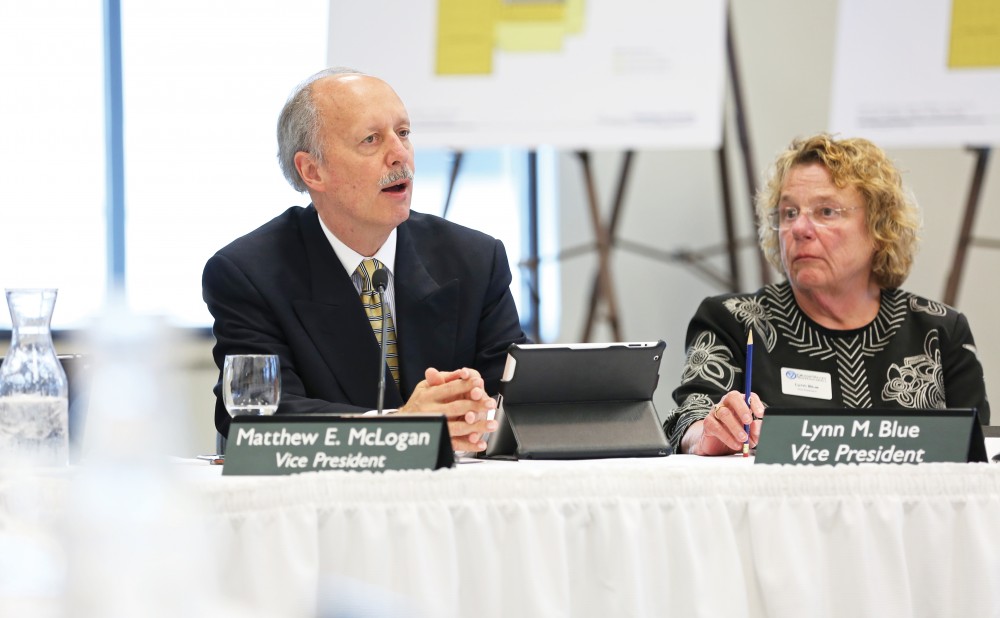GVSU’s economic impact rises to $780 million

GVL / Kevin Sielaff The Grand Valley State University Board of Trustees holds a meeting Friday, July 10, 2015, to discuss the 3.0 percentage increase on tuition rates. The motion passed, meaning that Grand Valley students will be paying $163.00 more per semester in tuition. Matthew E. McLogan updates the board with a general report.
Jun 6, 2016
As a growing number of students arrive on campus, keeping up and sustaining the local economy often depends on those individuals who work, study and maintain that community they live in.
In regard to Grand Valley State University, the overall economic impact the university has on the region is now estimated at $780 million.
Based on data from the 2014-15 academic year, the annual economic impact is up $50 million from the $730 million tracked during the 2013-14 academic year. Primarily, data from the study shows the total amount of employment and goods and services sold in the region and employment because of GVSU.
Jeff Musser, assistant vice president for university budgets, prepared the report as part of the finance and administration departments at GVSU. He said the model he used required annual input like student enrollment and the number of GVSU employees that live and work in the Kent, Ottawa and Muskegon counties.
“The model also requires inputs for estimates of non-tuition expenditures by students, (like) room and board, books and other miscellaneous spending,” Musser said. “The model takes these inputs and returns estimates of total sales and total employment in the region attributed to the existence of GVSU.”
GVSU employs over 3,400 people and has over 25,000 students, all of whom spend money and pay taxes in the region. The university’s presence shows how the money turns over in the community in production and growth.
“The university here in West Michigan is a force for economic stability, which helps provide employment on and off campus ,and is a benefit for the region and for those who work, live and spend in it, as well,” said Matt McLogan, vice president for University Relations at GVSU.
McLogan, who presented the data and the report at a Board of Trustees meeting on April 29, said the point of the data report was to indicate how important GVSU is to West Michigan. As a whole, he said, the report shows the direct relationship between college campuses and the economic stability of their communities.
“We have been doing this report now for more than 20 years to quantify the value of the university to the overall region,” McLogan said. “Second, and more importantly, we want to explain to the broader public why it is important to have a public university presence in the neighborhood.”
A contributing factor to the economic impact in the region is the substantial growth in GVSU construction. More than $75 million went into new construction and renovations in the local economy in 2015, which created over 1,500 construction jobs. McLogan also noted the construction of the new $37 million Holton-Hooker Learning and Living Center and the $7.8 million Recreation Center expansion on the Allendale Campus will be added onto the data for the following economic impact report.
Another highlight, McLogan said, was the more than 102,000 GVSU alumni that are living and working in West Michigan’s tri-county area. For him, he said, it proves that GVSU produces high quality students that want to give back to their community.
“I think that for students who will be graduating in a year and beginning their career in Michigan, (they will see) there are stable communities with strong local economies that produces jobs. There are jobs in West Michigan that wouldn’t exist if Grand Valley wasn’t there,” McLogan said.
For the full GVSU’s economic impact report, visit www.gvsu.edu/economicimpact.

























